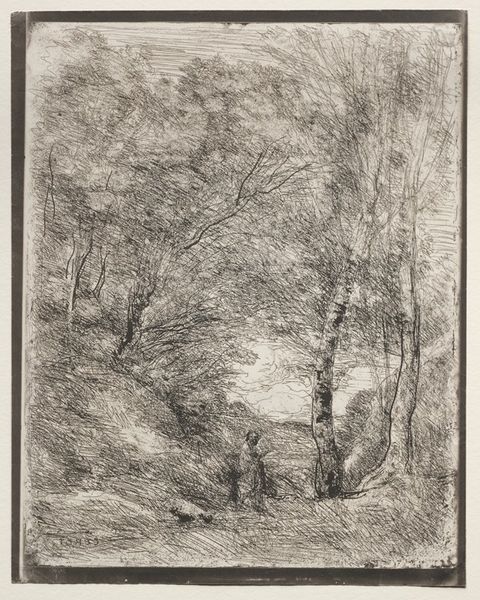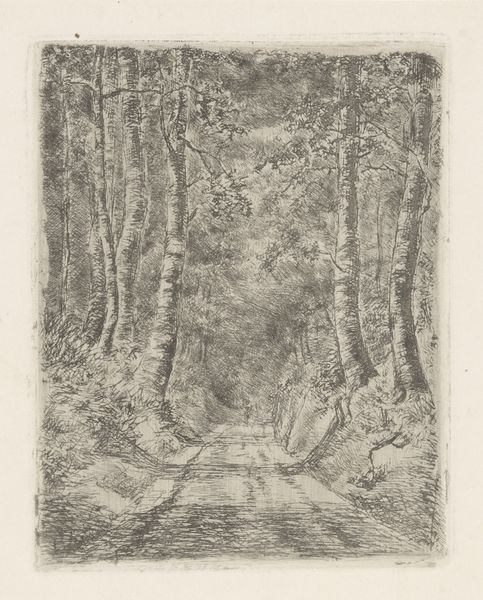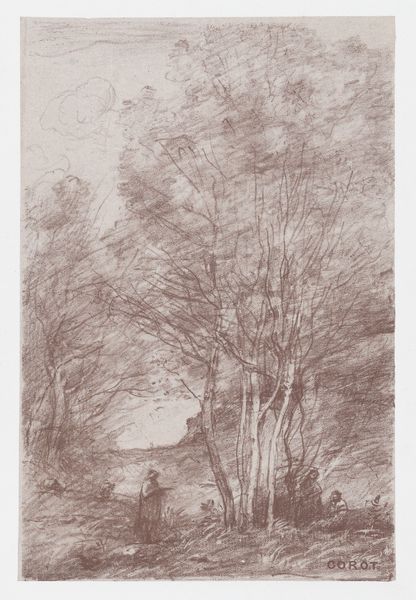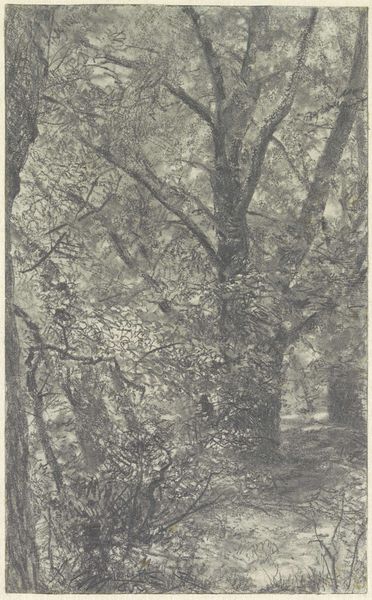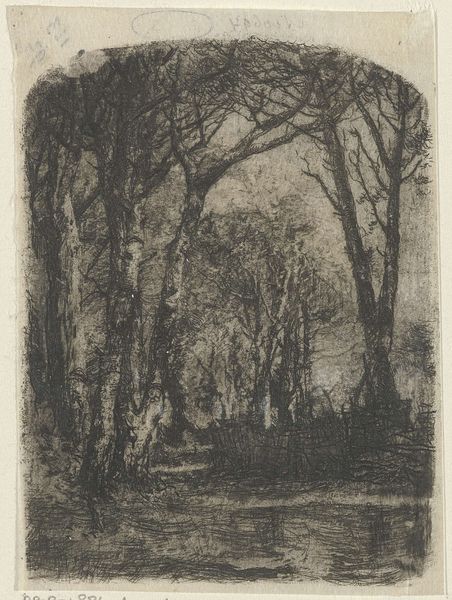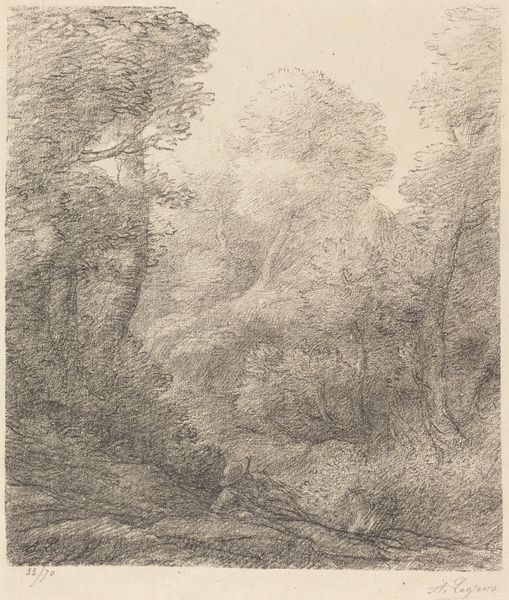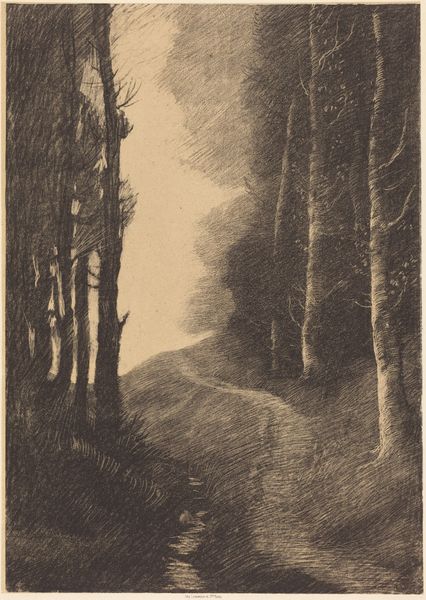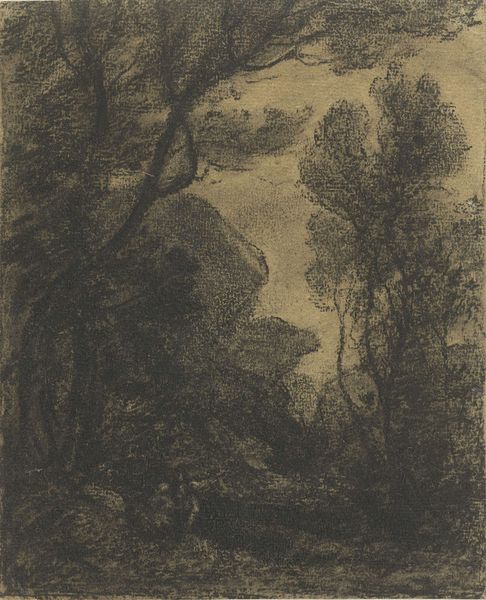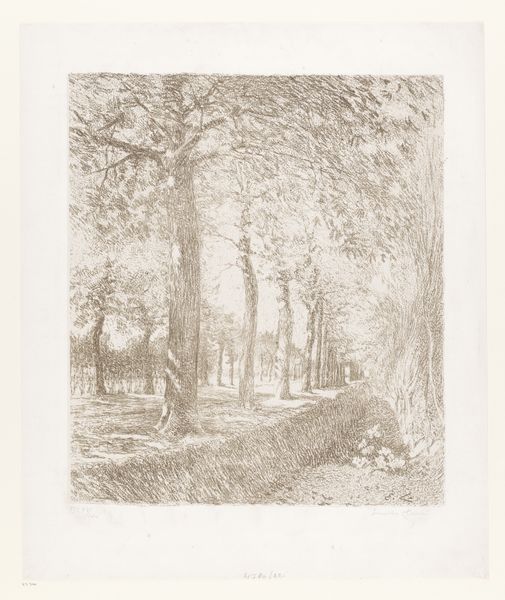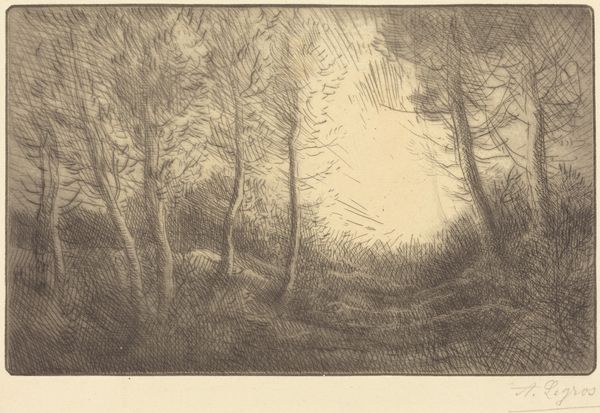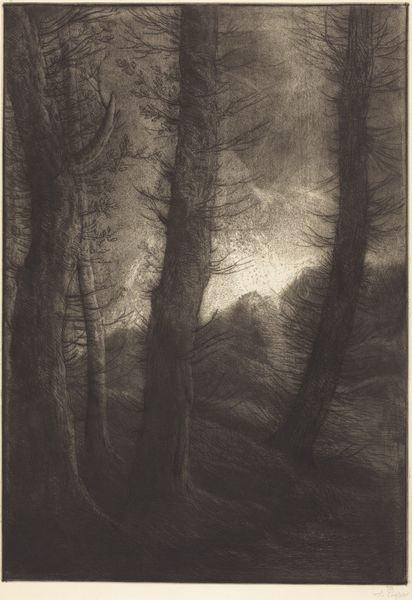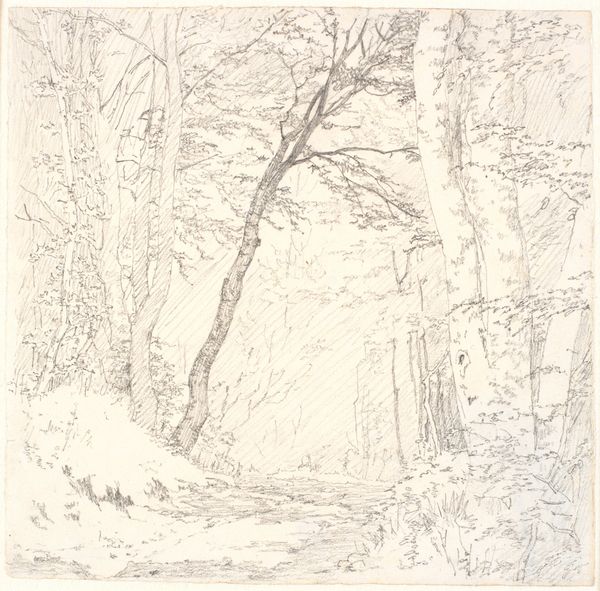
Dimensions: height 353 mm, width 263 mm
Copyright: Rijks Museum: Open Domain
Editor: Here we have Camille Corot’s etching, “Landscape with Horace under Large Trees,” created in 1855. It feels quite dreamlike, almost like a hazy memory. The composition seems to draw me in towards the center of the image. What strikes you most about this work? Curator: Formally, I'm intrigued by how Corot achieves such atmospheric depth using primarily line. Notice how the density and direction of the etched lines vary to suggest form and spatial recession. Consider the trees. Are they defined by contour or mass? Editor: It’s definitely the lines that create the trees. I see very few distinct outlines. Curator: Precisely. The absence of stark outlines contributes to the dreamlike quality you mentioned. Moreover, consider the figure of Horace. Is he distinct or rather subsumed by the landscape? Editor: He seems completely part of the trees, blending right in with the landscape itself. It almost feels like he disappears if you don’t look closely. Curator: Indeed. This suggests an interesting interplay between figure and ground, emphasizing the dominance of nature. The formal structure prioritizes atmosphere and tone over clear delineation, wouldn't you agree? Editor: Absolutely! It’s amazing how much detail and mood he can convey with a limited range of tones. I was expecting distinct shapes, but Corot prioritized a harmony with nature over a precise scene. Curator: This emphasis directs us to carefully consider the interplay of technique, form and mood, and how their combination constitutes this etching’s enduring artistic value. Editor: This really gave me a new perspective to look at how much art is communicated just by composition and structure, apart from any obvious representation.
Comments
No comments
Be the first to comment and join the conversation on the ultimate creative platform.
